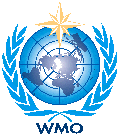26 November 2008: The World Meteorological Organization (WMO) will release, on 28 November 2008, a new international scientific review entitled “Aerosol Pollution Impact on Precipitation,” published jointly with the International Union for Geodesy and Geophysics.
The book examines the state of scientific knowledge on the way air pollutants, particularly tiny particles called aerosols, affect global […]
 26 November 2008: The World Meteorological Organization (WMO) will release, on 28 November 2008, a new international scientific review entitled “Aerosol Pollution Impact on Precipitation,” published jointly with the International Union for Geodesy and Geophysics. The book examines the state of scientific knowledge on the way air pollutants, particularly tiny particles called aerosols, affect global weather and climate patterns.
26 November 2008: The World Meteorological Organization (WMO) will release, on 28 November 2008, a new international scientific review entitled “Aerosol Pollution Impact on Precipitation,” published jointly with the International Union for Geodesy and Geophysics. The book examines the state of scientific knowledge on the way air pollutants, particularly tiny particles called aerosols, affect global weather and climate patterns.
Aerosols can be produced naturally or as the result of anthropogenic
activity. Once released in the air, they impact the atmosphere in
various ways. Understanding how aerosols can shift the global water
cycle is critical for weather forecast and climate models, as
inaccurate representations of aerosols and other pollutants in
meteorological models hinder efforts to provide policy-makers the
best-available weather and climate planning tools.
The publication
provides a comprehensive gap-analysis in knowledge on the way aerosol
pollution disrupts precipitation formation. It formulates
recommendations on how States and international organizations can fill
the identified gaps and translate this knowledge into more powerful
decision-making tools. [WMO Press Release]